Guppy fish are a popular tank fish known for being laid-back and easy to care for, as well as for having bright, beautiful colors. They’re also pretty effective at mosquito control.
First discovered in South America around the mid-1860s, guppies were quickly introduced to the pet trade. Since then, these hardy livebearers have been bred to display almost every color pattern and fin type you can think of!

Now, you can find them in almost every local pet store, ranging from the cheap variety all the way to the more expensive kind that costs several hundred dollars.
If you’re considering getting a couple of guppies for your aquarium, you’re in the right place. Keep reading this guppy fish care guide to learn all you need to know about these simple, yet striking, species.
Guppy Fish: A Quick Overview
Even with more than 300 reported varieties, guppy fish are pretty easy to care for. All you need to do is keep their tank clean and provide them with the right amount of food, and they’ll be happy as a clam!
- Scientific name: Poecilia reticulata
- Experience Level Needed: beginner
- Hardiness: Hardy
- Minimum/Maximum Tank Size: 5 gallons; 20 gallons
- Maximum Size: 1.4 inches (males); 2.4 inches (females)
- Life expectancy: 2–3 years
- Temperament: Peaceful
- Temperature: 76℉–82℉
- pH range: 6.8–7.8
- Water Hardness: 8–12 dGH
- Diet: Omnivore
- Breeding: Livebearing
Aquarium Setup
Take a look at a few tank requirements to keep your guppies happy and healthy.
1. Tank Size
Since guppies are pretty small in size, averaging about two inches in length, it’s recommended you get a 5-gallon aquarium.
This is an appropriate-sized tank if you’re just starting out with three guppies. Yet, because they tend to reproduce fairly quickly, you’ll find that you’ll soon need a 10 or even a 20-gallon aquarium.
2. Tank Decorations
Also, remember to make room for live aquarium plants, which provide the guppies with the cover and protection they need. They also provide the babies with a safe place to hide.
A few examples of natural plant cultivars you can use are aquatic fern, Java moss, Amazon Sword, or Anacharis.
Adding live plants means you need a layer of substrate on the bottom of the tank. While guppies aren’t picky about their tank decoration, it’s always better to use natural materials as much as possible.
You’ll want to keep these plants mainly in the background and middle ground and keep the middle area of the tank relatively free. This provides the fish with the open space they need to move and get their fill of play and exercise.
Generally, sand is recommended as a standard substrate layer. It’s fine enough not to cause any health issues if ingested, and it works perfectly with any live plants you have in the tank.
Another thing to add to the tank is a filtration system. However, if you have fry, the most suitable type would be a gentle sponge filter that won’t suck up the little ones.
3. Water Parameters
Guppies, like many other livebearers, prefer their water to be at pH levels of about 7.0 or higher. However, on average, it should be between 6.8–7.8.
They also enjoy hard water in the range of 8–12 dGH. Guppies also thrive when their water contains essential minerals, such as magnesium calcium, and iron.
Yet, what’s more significant is the correlation between pH levels and water hardness. Typically, the higher the levels of water hardness, the higher the pH levels.
Remember to change half the water in the tank once a week. This way, the water will remain clean and fresh, just the way your guppies like it.
4. Heater
Tank guppies aren’t as resilient as those found in the wild. So, even a couple of degrees difference in temperature can affect their health and longevity.
Adding a tank heater can ensure that the water stays at a steady temperature of 76℉ to 78℉.
Keeping the water in this temperature range means your guppies can live for up to 2–3 years. Raising the heat up to 82℉ will boost their growth and reproduction rates. However, they’ll only live up to 18 months at most.
Alternatively, reducing the temperature of the tank to less than 72°F increases their life span, allowing them to live up to three and a half years, sometimes even longer, depending on the conditions of the tank.
The downside is that they won’t mature into adulthood as fast, which means they won’t reproduce as often.
5. Lid
Most times, aquarium owners don’t bother with a lid, unless they need it to hold up a light. Otherwise, they’re happy just leaving the roof off their tanks.
Yet, because they’re so bubbly and energetic, guppies are like mini athletes that do all sorts of acrobats, like jumps and flips.
While those moves can help them survive in the wild, they can be a serious problem for home aquariums.
Adding a lid can help put an end to your guppies’ acrobatic jumps and leaps once and for all.
Check out this guide to learn the pros and cons covering your tank with a lid.
Difficulty
Guppies are the perfect tank fish for beginners. They’re easy to care for and keep alive! At the same time, seasoned aquarium owners love them because of their vibrant colors and friendly nature.
Either on their own or with a group of other peaceful tank fish, guppies will stand out because of their vibrant colors and multitude of patterns and striations.
Unfortunately, there are a couple of downsides you may encounter with guppies. The good news is that many can be prevented, and if they do happen, they’re easy to fix.
Take a look:
- Guppies are prone to several diseases, parasites, and fungal infections.
- Can easily succumb to stress as a result of crowded tanks, aggressive mates, and frequent fluctuations in water temperature.
- Won’t hesitate to jump out of the tank and to their deaths if given a chance.
- Females can eat their fry soon after they’re born, especially in crowded tanks.
- Males can become aggressive when there aren’t any females around.
Related Guide: Do Male Guppies Need Female Guppies In The Tank?
Feeding
The general rule is that adult guppies should eat once or twice a day. Only offer as much as they can in one minute. This means you’ll probably go through a period of trial and error until you discover how much fish food that comes down to.
Learn how long guppies can live without food in this guide.
If you’re raising baby guppies, increase the number of feedings to 3–5 times a day. Yet, you have to reduce the amount of food in each meal so they don’t end up overeating or fouling the water with leftovers.
Here are a few pointers to remember when feeding your guppies:
- They’re not picky eaters.
- Will often graze on algae growing inside the tank.
- Prefer a variety of foods, including brine shrimp, bloodworms, pellets, and flake foods.
- Are fantastic at begging for food, but don’t be fooled by their adorable faces.
- Overfeeding leads to fatal health problems like constipation, swim bladder disease, and bloated bellies.
Breeding and Social
Here’s a quick look into the breeding and social behavior of your guppies.
Breeding
Guppies will start producing fry when they’re about 10 weeks old, or three months old. They’ll continue to breed every 30 days until they’re about 20 months old, which is their average lifespan.
Check out this guide to learn at what time guppies give birth to babies.
As mentioned above, guppies are livebearers, which means they don’t lay eggs. Rather, the female gives birth to live fish after a gestation period of 21–40 days.
What’s even more interesting is the number of young people produced at one time. The average number is 50 to 60 babies, while younger females can give birth to hundreds of babies at once.
Keep in mind that raising water temperatures speeds up their maturity. So, that’s one thing you can try if you want to have lots of babies.
Another thing you can do is increase the amount of food you give to the adults. Frequent water changes will also keep the water quality high, ensuring faster breeding.
As for the fry, if you want them to mature to adulthood, make sure you provide them with lots of hiding spots. Otherwise, the parents will usually prey on the young fish soon after they’re born.
Once the fry are about 1–6 weeks old, they start to get some color. That’s when you can give them away to friends, sell them to a local fish store, or feed them to other fish.
Tank Mates
As long as they have one or two other guppies to share the tank with, guppies will be fine on their own. They’ll spend their days busy dashing from one end of the aquarium to the other, showing off their bright colors and flashy fins.
However, they’ll also do just as well with other peaceful tank mates. A few examples of fish species that have no problem being around guppies, and vice versa, are cardinal tetras, dwarf neon rainbows, and cory catfish.
Also, neon tetras are a nice tank mate option to have with guppies.
The important thing is to avoid adding any type of aggressive fish to your guppies’ tank, like crayfish, angelfish, or tiger barbs.
These fish are considerably larger and more intimidating, and will only end up nipping at the smaller guppies, or even mistake them for food!
Read: Can Guppies Live With Betta Fish?
Conclusion
While you may encounter a few potential challenges here and there, guppies are generally an easy breed to keep.
They’re great for beginners because they’re low-maintenance. They are an adorable fish species in the aquarium hobby because of their small size, brilliant colors, and quick reproduction rates.
Use this guppy fish care guide to make sure you provide your fish with the most ideal living conditions. In turn, you’ll get to enjoy their magnificent color patterns and easy-going demeanor for years to come.
Hi! I’m Praveen Ghoshal, the founder of eFishkeeping.com. Inspired by my Dad, I got interested in fishkeeping when I was a kid. Since then, I have been involved with this hobby. Currently, I have 3 fish tanks at our home, and I enjoy this hobby with my full family. Read more about me here.

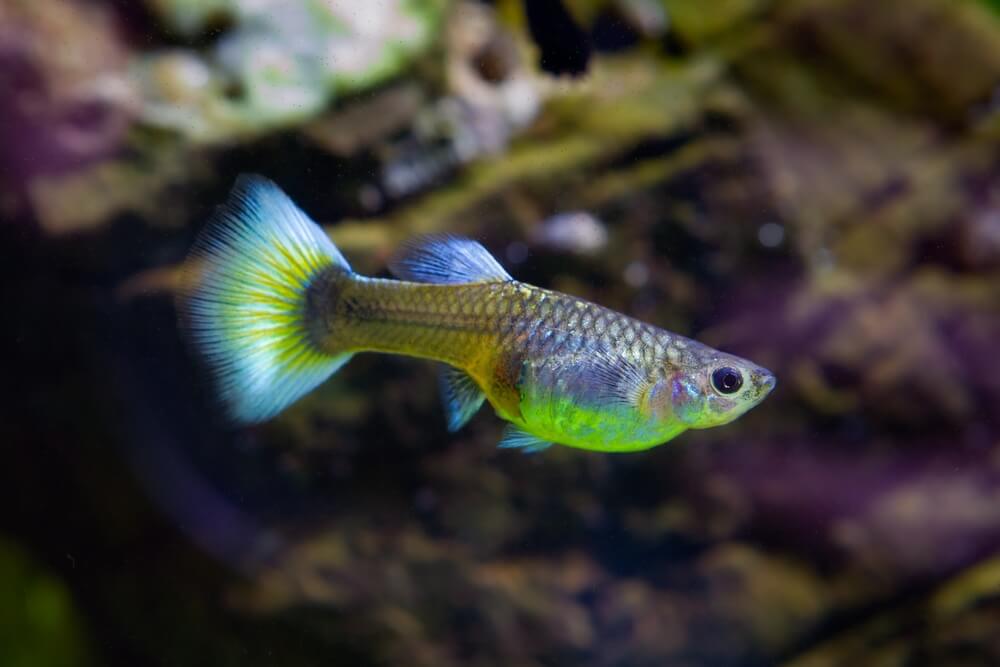


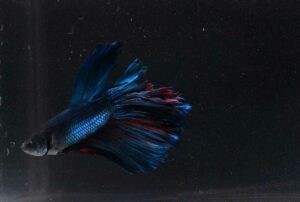


![Do Neon Tetras Die Easily? [Here’s The Truth!] do-neon-tetras-die-easily](https://efishkeeping.com/wp-content/uploads/2023/03/do-neon-tetras-die-easily-300x200.jpg)